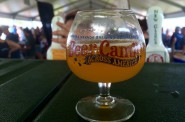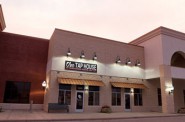The Pleasures of Pilsner
Variants of this style still dominate among America’s beers. Why?
Considered the third most popular drink in the world after tea and water, beer is drank throughout the world, and Milwaukee was long famous as one of its leading manufacturers. But beer is an umbrella term for any alcoholic beverages made from malt and grains and can mean many things. With this new column, we’ll be trying to clarify and celebrate all things related to beer, and chronicling the increasingly vibrant beer culture in Milwaukee.
A good way to start is with the kind of beer that is prominently sold throughout the U.S. and was a key to old brewing tradition in Milwaukee: the pilsner beer.
Over the last two centuries the pilsner style has spread throughout the world, first in Europe and then North America with German brewers such as Frederick Miller in Milwaukee and Adolph Coors in Colorado. Today, four distinct styles of pilsners have come into being: Czech, European, German, and American. While each stay true to the original recipe such as the use of Saaz hops and pale malt, they are all unique in one way or another.
For example, the German style features a more earthy taste and is considered the most bitter of the four due to the use of additional bittering hops during the brew process, while the European is on the sweeter side and can be made with ingredients besides barley malt. And while the American pilsner was derived from the German style, the style has evolved more along the lines of the European style, for some American brewers add rice to the mash producing a sweet, extra pale, and lighter bodied pilsner due. This is not to say that all American made pilsners are brewed in this fashion, for Miller Brewing Company continues to brew it beer in the German style using pale malt and Saaz hops, among other ingredients key to that particular style.
Like the original Czech-created pilsner, the American pilsner has evolved over the century as well creating the subcategories of Lite and Non-alcoholic variety. These beers begin as standard American pilsners but are boiled to kill some or most of the alcohol. The beer is then cold filtered or heat pasteurized, depending on the manufacturer, to remove the proteins and create a clarified beer that is light bodied and low on calories.
Today, Milwaukee is again home to a fledgling brewing community, and while IPA’s and Stouts are becoming all the rage, the pilsner is still the reigning champion. One is hard pressed to find a Milwaukee, or even a Wisconsin brewery for that matter, that doesn’t feature a pilsner in one style or another. Among the best in Milwaukee are Lakefront’s Wisconsinite Summer Pilsner and Klisch Czech Pilsner, Miller-Coors’ Batch 19 Pre-Prohibition Lager, Miller High Life, and Sprecher Light. The pilsner remains the style most people think of when you say beer, and at its best is a very satisfying and smooth drink.
Czech Pilsner Recipes
Published by Brew Your Own Magazine, December 2000
Czech-Style Pilsner – Partial Grain
- 5 Gal, O.G = 1.049 F.G. = 1.010 IBU = 35
- Ingredients:
- 6.5 lbs. Bierkeller pale malt extract or 5.5 lbs. extra light dry malt extract (DME)
- 1 lb. light Munich (9° Lovibond)
- 8 oz. carapils (1.7° Lovibond)
- 5.1 AAU Hallertau hops (1 oz. at 5% alpha acid) at boil
- 2.1 AAU Saaz hop pellets or whole hops (0.5 oz. at 4.2% alpha acid) at 15 minutes
- 2.1 AAU Saaz hop pellets or whole hops (0.5 oz. at 4.2% alpha acid) at 30 minutes
- 1.05 AAU Saaz hop pellets or whole hops (0.25 oz. at 4.2% alpha acid) at finish
- Starter of Wyeast 2278 (Czech Pils)
Step by Step:
Add crushed grains to 1/2 gallon 155° F water. Hold this temperature for 20 minutes. Raise to 165° F. Run entire volume through kitchen colander (preferably fine wire mesh) and gently rinse with 3/4 gallon of 170° F water. Add malt extract. Top off boiling vessel to 5.5 gallons. Boil for 45 minutes, adding hops as indicated by the hopping schedule above. Cool the beer as quickly as possible to 50° F and pitch yeast starter. Hold temperature steady for 14 days. Transfer lager to secondary fermenter or keg.
Slowly lower the temperature to as cold as possible without freezing the beer. Hold this temperature for 90 days.
Czech-Style Pilsner – All Grain
- 5 Gal, O.G = 1.049 F.G. = 1.010 IBU = 35
- Ingredients:
- 8 lbs. two-row pilsner malt
- 1 lb. light Munich (9° Lovibond)
- 8 oz. carapils (1.7° Lovibond)
- 5.1 AAU Hallertau hops (1 oz. at 5.1% alpha acid) at boil
- 2.1 AAU Saaz hop pellets or whole hops (0.5 oz. at 4.2% alpha acid) at 20 minutes
- 2.1 AAU Saaz hop pellets or whole hops (0.5 oz. at 4.2% alpha acid) at 40 minutes
- 1.05 AAU Saaz hop pellets or whole hops (0.25 oz. at 4.2% alpha acid) at finish
- Starter of Wyeast 2278 (Czech Pils)
Step by Step:
Add approximately 2.25 gallons 135° F water to crushed grains. Stabilize at 122° F and rest for 30 minutes. Then add one gallon boiling water and bring mash to around 149° to 152° F. Rest, checking for conversion at one hour. Mash out at 168° F and sparge with 4.5 gallons water. Collect 5.5 gallons of wort and continue to boil. Boil as indicated by hopping schedule above. Total boil time is 60 minutes.
Cool beer as quickly as possible to 45° F and pitch yeast starter. Hold temperature for 14 days. Transfer lager to secondary fermenter or keg. Slowly lower temperature to as cold as possible without freezing. Hold this temperature for 60 days.
For brewing instructions please refer to my prior guide.
Beer City
-
The Crowd Rules At MobCraft Brewery
 Jul 7th, 2016 by Joey Grihalva
Jul 7th, 2016 by Joey Grihalva
-
Sierra Nevada Beer Camp Was a Winner
 Jun 13th, 2016 by Joey Grihalva
Jun 13th, 2016 by Joey Grihalva
-
The Rise of O’so Brewing Co.
 Dec 1st, 2015 by Christophor Rick
Dec 1st, 2015 by Christophor Rick




















